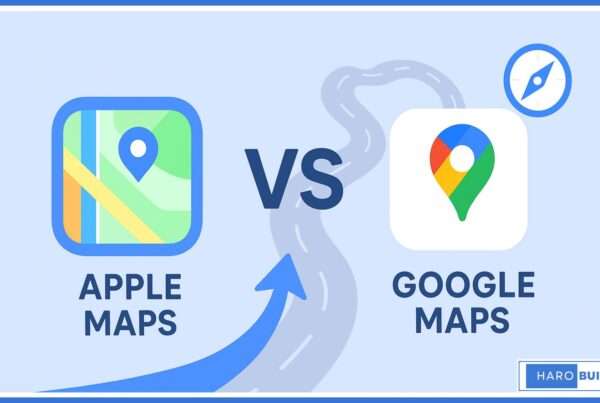
Many websites vanish from search results because they unknowingly use black hat link building tactics. Black hat backlinks come from spammy sources like link farms, private blog networks, and manipulative link exchanges. These practices violate search engine algorithms and damage your website’s link profile and credibility. Websites using black hat SEO techniques like keyword stuffing, cloaking, or link schemes risk permanent deindexing. Site owners may gain short-term visibility but lose long-term rankings by passing link juice through unethical sources.
This article provides a complete guide on black hat link building strategies, their risks, and safe techniques to follow instead. Understanding what tactics to avoid can help protect your SEO strategy and boost organic rankings the right way.
What is Black Hat Link Building and Why It’s Risky
Black hat link building refers to manipulative SEO practices that aim to influence search engine rankings artificially. Techniques like link farms, private blog networks, keyword stuffing, and link exchanges are used solely to link and pass link juice unnaturally. These black hat links are created without regard for user experience, ethical link building, or quality content. Such links can distort your website’s link profile and mislead search engine algorithms, which is considered a black hat SEO tactic.
These methods violate search engines’ guidelines and can trigger manual penalties or a negative SEO attack. Black hat link builders often prioritize short-term gains over long-term success, risking the website’s search engine rankings. Unlike white hat link building strategies that focus on relevance and authority, black hat techniques manipulate search engine rankings by creating unnatural link patterns. Eventually, these black hat SEO practices damage trust, affect visibility, and weaken backlink profiles, making them risky for any site owner.
Common Black Hat Link Building Techniques to Avoid
1. Private Blog Networks (PBNs):
Private Blog Networks are a black hat link building strategy used to manipulate search engine rankings artificially. These networks consist of expired domains repurposed solely to link back to a target site. Using black hat SEO link building, like PBNs, can distort your website’s link profile and violate SEO practices. These backlinks may pass link juice, but they stem from low-value or unrelated content sources. Furthermore, links from PBNs generate unnatural link patterns that are easily flagged by search engine algorithms. Techniques like these are black hat SEO tactics and must be avoided in link building techniques to avoid.
2. Link Farms:
Link farms are networks of websites that link to one another for the sole purpose of boosting rankings. Unlike ethical link building, these manipulative link schemes exist only to manipulate search engine algorithms. Concurrently, this tactic is used by black hat link builders to inflate backlink counts rapidly. However, websites that link from such farms generally lack authority or relevance. Techniques like link farms create unnatural link velocity, trigger penalties, and weaken your website’s link profile overall. Avoid black hat link building practices like these to protect your search results and long-term credibility.
3. Keyword Stuffing:
Keyword stuffing is a black hat SEO technique that overloads a page with repetitive keywords to manipulate rankings. This outdated SEO tactic reduces user experience and affects a page’s ability to attract natural link acquisition. Despite being an old-school method, black hat SEOs still use it across low-quality link building services. Black hat tactics, such as keyword stuffing, must be flagged as black hat link building techniques to avoid. Moreover, stuffing keywords into anchor text or backlinks can also harm your backlink profile over time.
4. Comment Spamming:
Comment spamming is a black hat link building tactic where automated bots post links in blog comments. These black hat backlinks usually lead to irrelevant content and offer no value to readers or site owners. Concurrently, comment sections flooded with spam damage the user experience and create negative SEO signals. This type of link is considered a black hat SEO tactic because it manipulates link juice unnaturally. Furthermore, comment spam can degrade your link profile and lead to penalties from search engines that identify black hat practices.
5. Hacking Websites for Backlink Insertion:
Some black hat link builders hack websites to insert hidden backlinks into content, footers, or templates. These manipulative link insertions are difficult to detect and often pass link juice to the attacker’s domain. While effective in the short term, using black hat tactics like this violates ethical link building and security norms. This technique is part of black hat link building practices and can prompt legal action alongside deindexing. Indeed, engaging in black hat link schemes through hacking degrades the trustworthiness of all parties involved.
6. Automatically Generated/Duplicate Content:
Automatically generated content and duplicate pages are often used to build black hat backlinks quickly and cheaply. Although they create volume, these pages provide no actual value and harm the user experience. Furthermore, black hat SEOs use these pages to manipulate search engine rankings by stuffing them with black hat links. Such content leads to link schemes that violate white hat SEO strategies and ethical link building practices. Eventually, search engines detect this type of link and remove its impact, while penalizing the site responsible for its publication.
7. Manipulating Links Through Plugins or Themes:
Some black hat link builders hide links in plugins or themes downloaded by unsuspecting website owners. These links then silently pass link juice to a target domain without consent or disclosure. This type of link is hard to notice but still falls under black hat SEO techniques like cloaking and link stuffing. Techniques like these distort link profiles and harm a site’s SEO strategy significantly. Moreover, using black hat SEO plugins to acquire backlinks violates all known white hat link building standards and best practices.
The Long-Term Impact of Black Hat Backlinks
Black hat backlinks may initially boost search results, but eventually, they damage your website’s link profile and credibility. Furthermore, black hat SEO practices like using link farms or link schemes result in penalties and ranking losses. Hence, avoid black hat link building strategies to maintain sustainable SEO performance over time.
Damage to Domain Authority and Organic Traffic:
Using black hat link building tactics can gradually weaken your domain authority and reduce organic traffic. These backlinks often come from spammy sources like link farms, private blog networks, or cloaked pages. Consequently, search engine algorithms devalue these unnatural link patterns and diminish trust in your backlink profile. Moreover, such manipulative link strategies frequently lead to unstable ranking positions and loss of keyword visibility.
Key impacts on domain authority and traffic:
- Black hat backlinks distort your website’s link profile and reduce natural link acquisition.
- They negatively affect SEO strategies focused on long-term growth and white hat link building.
- Such practices frequently result in a lower user experience due to irrelevant or misleading links.
Google Penalties and Manual Actions:
Black hat SEO link building techniques often trigger penalties from search engines, especially through manual actions. Once unnatural link schemes or keyword stuffing are detected, a site may face reduced visibility or complete deindexing. Specifically, link exchanges, links from link farms, and manipulative plugins are often flagged.
Consequences of engaging in black hat tactics:
- Google may apply manual actions that severely reduce your search engine rankings and traffic.
- Recovery from penalties requires significant effort, transparency, and removal of all black hat backlinks.
- Black hat link builders rarely disclose risks, leaving the site owner responsible for violations.
Recovery Challenges After Using Black Hat Techniques:
Recovering from black hat SEO practices is time-consuming, technically demanding, and often uncertain. Removing hundreds of black hat links involves identifying black hat patterns, disavowing toxic domains, and rebuilding your backlink profile. Simultaneously, you must shift toward ethical link building and white hat SEO strategies.
Challenges during recovery from black hat practices:
- Site owners must analyze every type of link and locate unnatural link patterns across multiple domains.
- Link building agencies using black hat methods rarely support post-penalty clean-up, increasing the burden.
- Rebuilding trust with search engines and regaining rankings by passing link juice through quality links takes time.
How to Spot Black Hat Links?
Check Search Console for Manual Actions:
Google Search Console is a reliable tool to detect black hat link building tactics affecting your rankings. Begin by checking the “Manual Actions” section, where Google flags unnatural link patterns. If you notice a penalty, it usually relates to toxic black hat backlinks.
Black hat link builders often use manipulative techniques like link stuffing or unnatural anchor texts to pass link juice. Consequently, such links violate SEO practices and white hat link building guidelines. Moreover, search engines view these actions as attempts to manipulate search engine rankings and may penalize your site accordingly.
Perform a Backlink Audit:
Conducting a backlink audit helps detect black hat link building techniques that may harm your SEO performance. Use tools like Ahrefs, SEMrush, or Google Search Console to evaluate each backlink’s source, anchor text, and relevance.
Tips to spot manipulative backlinks:
- Review links from link farms, link exchanges, or suspicious link building agencies
- Flag backlinks using keyword stuffing or cloaked pages, as these reflect black hat SEO techniques
- Identify unnatural link patterns and link velocity spikes, which often signal black hat link builders
Look for Signs of Black Hat Links:
Certain red flags can indicate that black hat link-building is affecting your backlink profile negatively. Specifically, links from unrelated sites, auto-generated content, or foreign language domains often signal black hat tactics. Also, if your site has backlinks from websites that link to hundreds of unrelated domains, investigate immediately.
Common black hat practices to look out for:
- Backlinks inserted via hacked websites or theme footers
- Participation in link schemes involving reciprocal linking or paid placements
- Use of anchor texts that manipulate search engine algorithms for quick rankings
Conclusion
Black hat link building may seem tempting, but it ultimately harms your website’s search engine rankings and trust. Manipulative SEO practices like using black hat backlinks or keyword-stuffed anchor text lead to penalties and negative SEO attacks. Instead, focus on ethical link building, natural links, and white hat SEO strategies that prioritize quality. Site owners who build a strong backlink profile through approved link building services will achieve sustainable results. Would you trust your long-term SEO success to shortcuts that might get your site banned?
FAQs
1. What does link building mean in SEO?
Link building means getting other websites to link to your site to improve search engine rankings.
2. Why are backlinks important for a website?
Backlinks help search engines understand your site’s relevance and authority, which improves your visibility online.
3. What makes a link harmful to SEO?
Links from low-quality or unrelated sites can harm rankings and trigger search engine penalties.
4. How can bad links hurt my website?
They reduce trust, damage your site’s reputation, and can lower your rankings in search results.
5. What is a link farm?
A link farm is a group of websites that link to each other just to boost rankings artificially.
6. Are all links helpful for SEO?
No, only high-quality, relevant links from trusted sources help improve your website’s SEO performance.



